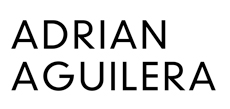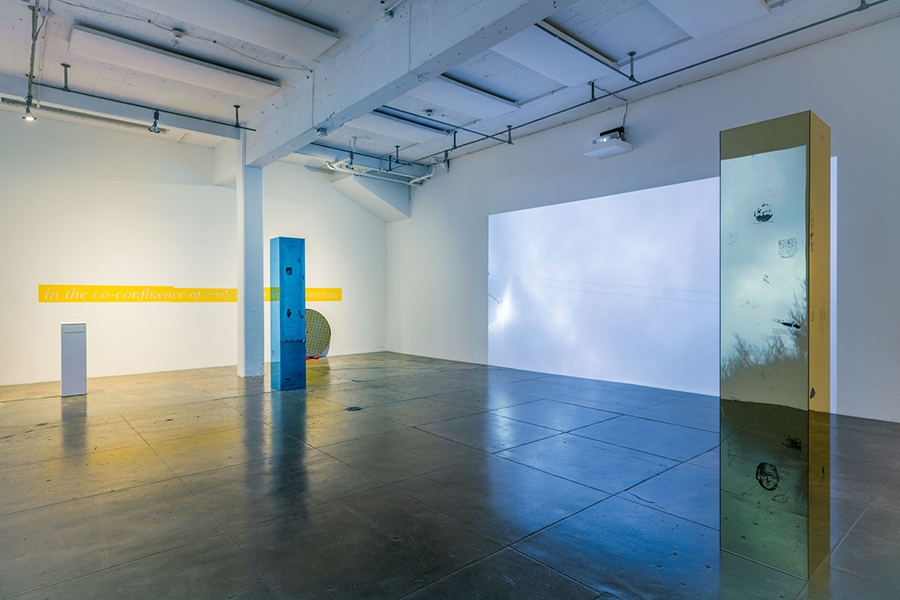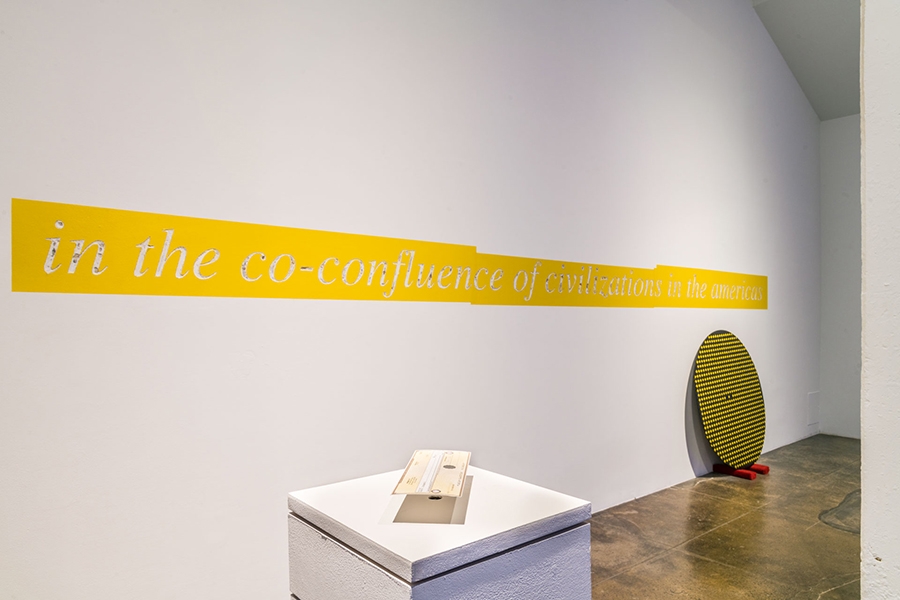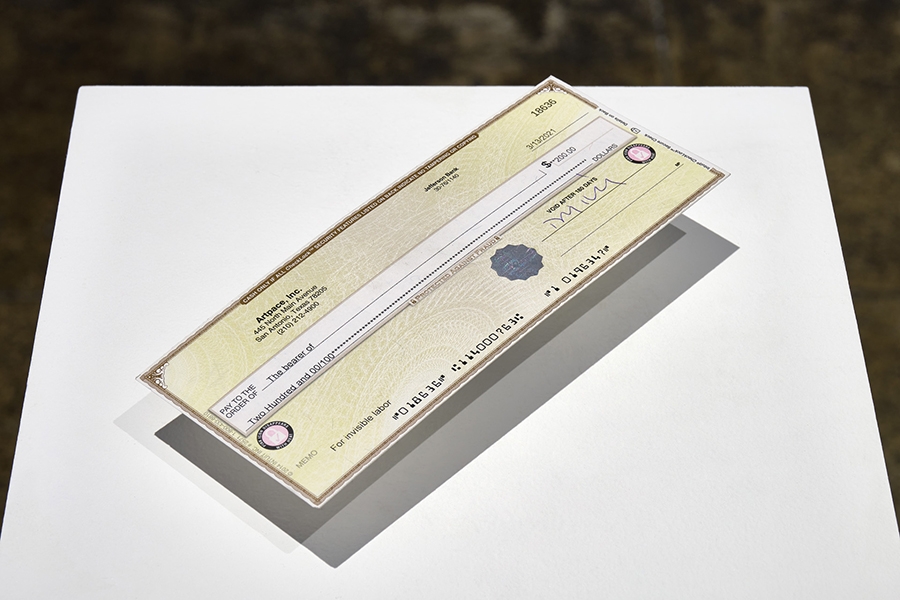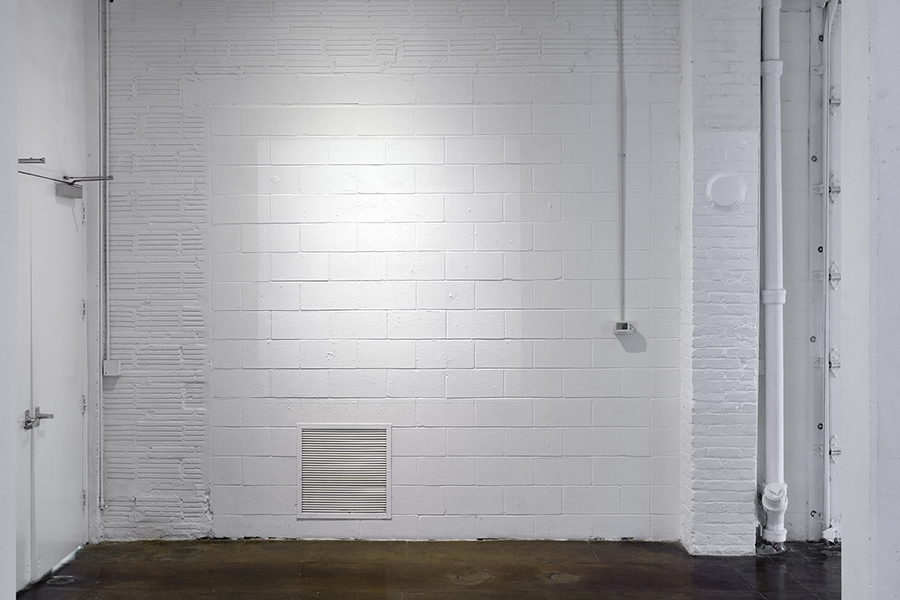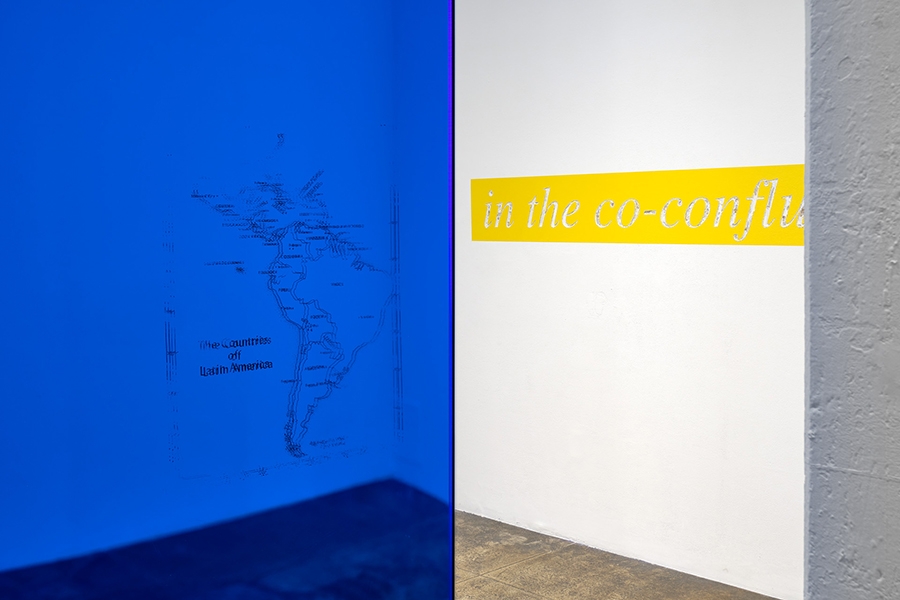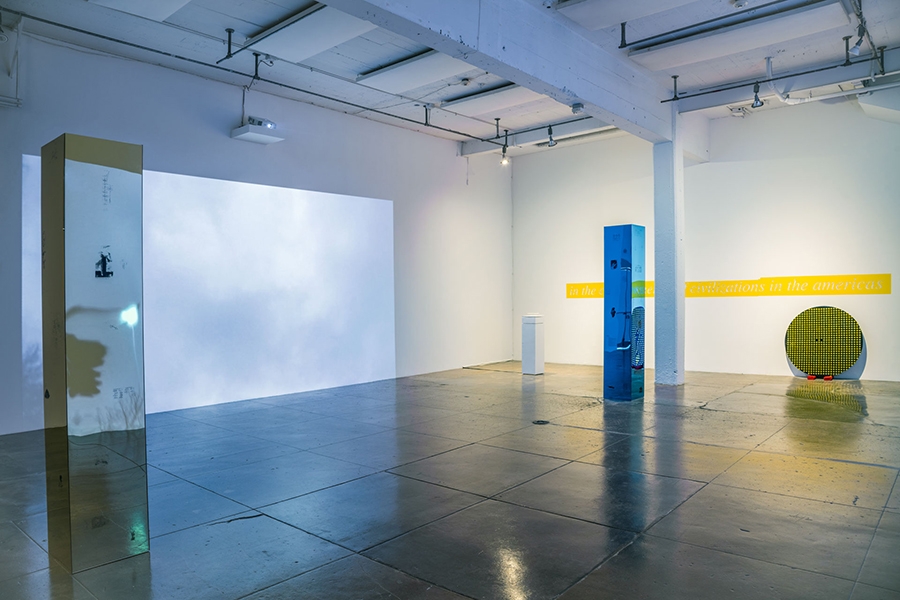© 2006 - 2025 Adrian Aguilera
Built with Indexhibit
in the co-confluence
in the co-confluence of the civilizations in the americas
Adrian Aguilera
Artpace San Antonio, San Antonio, TX
Spring 2021 International Artist-in-Residence Program
In-Residence Dates: Jan 25,2021 - Mar 27,2021
Exhibition Dates: March 25, 2021 - May 16, 2021
Austin-based artist Adrian Aguilera’s video and mixed-media installation in the co-confluence of the civilizations in the americas proposes an ontological and physical exploration of the invisible labor of Brown and Black (BIPOC) workers and other immigrant groups. Though rarely seen or acknowledged, their work may take place early in the morning or late at night, but all of our lived experiences are directly affected by their labor, which contributes to multiple economies as well as the spaces in which we coexist, despite its invisibility.
Aguilera’s two-channel video untitled (civil twilights, 13:03:21) is informed by French filmmaker Marguerite Duras’s 1978 Les Mains négatives (“Negative Hands”) in which Duras shot a sequence of deserted Parisian streets from night to dawn. In her film, a poetic voiceover describes handprints (from 12,000 to 17,000 years old) discovered in the Magdalenian caves of Western Europe. In a similar spirit, Aguilera’s video beckons the viewer to ride along during two daily periods of civil twilight—the early morning and the late afternoon—when most essential laborers are already working, and other workers are returning home. In remembrance of Breonna Taylor’s senseless murder in 2020, untitled (civil twilights, 13:03:21) was filmed around the San Antonio National Cemetery and city cemeteries on the anniversary of her death, March 13. Taylor was herself an essential worker who was murdered by police in her home while sleeping.
Nearby in the gallery, two columns of gold and blue acrylic, untitled (study of longing for landscape), reveal subtle, transferred images representative of indigenous civilizations in the Americas, but also images of plants, fossils, and rock art. This work resembles the Mexican Muralism tradition in which narrative public murals convey humanitarian, social, and political themes to the masses. Aguilera’s untitled (study of longing for landscape) draws inspiration from Juan O’Gorman’s mural Confluence of Civilizations in the Americas, originally commissioned for the 1968 HemisFair in San Antonio, which was organized around the same titular theme. Aguilera expanded the idea using images representative of myriad peoples and cultures and the mixing of civilizations and knowledges in the Americas.
Taking the notion of invisible labor a step further, Aguilera’s untitled (ephemeralization of an economy) presents an institutional bank check floating above a pedestal. The check was a reimbursement to the artist for some painting he had done in the gallery. For that work, he hired an immigrant day laborer (Fernando, a native of the northern Mexican state of Coahuila) who was without a Social Security number (SSN) and therefore paid in cash. This piece highlights the tension between what some would deem a more civilized economic arrangement (involving SSNs, W-9s, and business-issued checks) and an entirely unacknowledged informal economy. The work’s title refers to “ephemeralization,” a term coined by R. Buckminster Fuller, which suggests, in his words, the ability of technological or human advancement to do “more and more with less and less until eventually you can do everything with nothing.” Fuller’s vision of ephemeralization conceived of ever-increasing standards of living for an ever-growing population, despite finite resources.
Continuing his practice of revealing histories, the text-based work untitled (in the co-confluence of the civilizations in the americas) was made using a vinyl mask and the artist painstakingly carving out the letters of his exhibition title. In doing so, he reveals the strata of histories of the gallery space. Each layer represents the presence of not just another artist but the physical labor of numerous unnamed art handlers and contract workers over the course of as many as 25 years, revealed in the pentimenti of each layer made visible. The title of this work, as well as Aguilera’s exhibition, is taken from Juan O’Gorman’s mosaic mural in San Antonio, which features images of the biblical Adam and Eve, European immigrants, and representations of Central and South American indigenous groups.
Aguilera’s temperature-sensitive painting untitled (34.1°C = 93.4°F to 300°C = 572°F), activated by human touch (as well as performed by the artist), shifts across a color spectrum indicating increases and decreases in body temperature. The lower end of the temperature range represents a body at rest, while the higher end represents a body at work as required for labor work. The painting casually rests on two gallery bolsters, typically used during installation, to highlight the artifice of the transition between an exhibition of art being installed and when it is ready and open for public viewing or interaction. The systems for reading temperature indicated in the painting’s title bring to consciousness another way of understanding the energy that labor work requires.
Interested in the conceptual aspect of Minimalist Art, Aguilera looks to artist Robert Ryman—a former guard at the Museum of Modern Art in New York and a self-taught artist whose education consisted of his seven years as an essential worker at MoMA—as a reference for untitled (surface unveil, white #1 and #2), two works made with white conforming vinyl. At Artpace, Aguilera has applied a square of white vinyl in the center of the gallery’s north wall, as well as on a perimeter middle column. His choice of a square shape, as in Ryman’s work, avoids the conventional suggestion of representing windows and landscapes. The white color choice reinforces a conviction that every visible detail of the wall surface contributes to the viewer’s experience of it and the ambient light. The vinyl hugs the rough textured surfaces of the cinder block on the wall and the fired brick column, architectural features from different time periods in the Artpace building’s history. Once applied, with great attention to detail, the vinyl picks up imperfections and minutiae from each surface. Those details are themselves evidence of the hands of past builders and contractors, likely BIPOC workers. In Aguilera’s work, materials, real or artificial light, and the space in which the work is exhibited and exists become the mediums for conveying his ideas about history, knowledge, and people.
Each of the works produced for in the co-confluence of the civilizations in the americas exposes viewers, through diverse materials, to the absence/presence of invisible labor upon which our society so closely relies.
Photo Credit: Beth Devillier
3D Tour: Chris Mills
